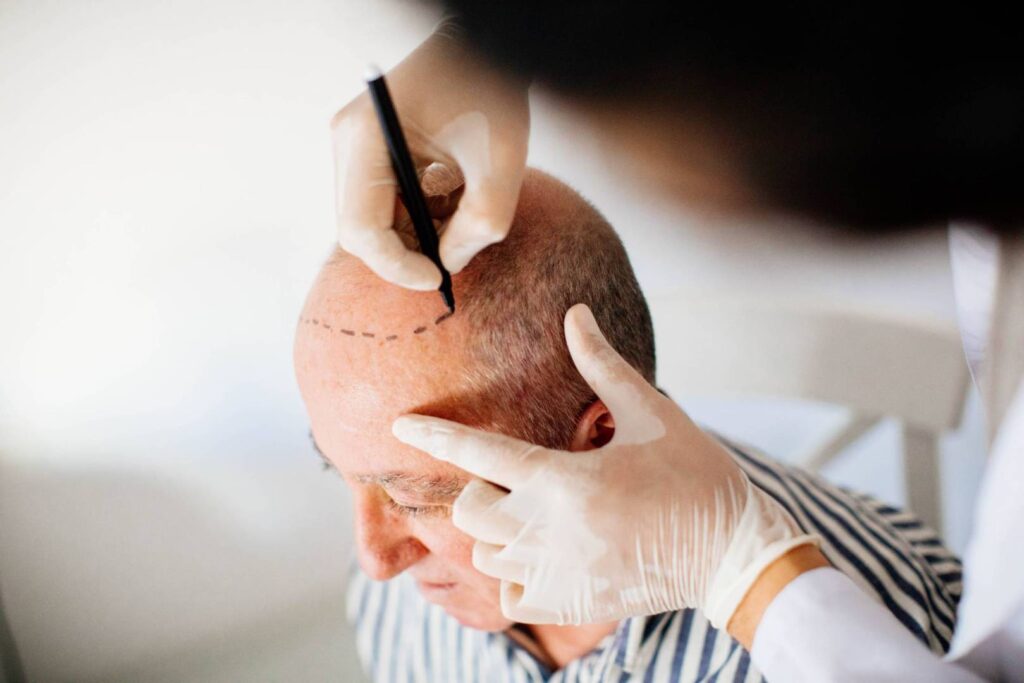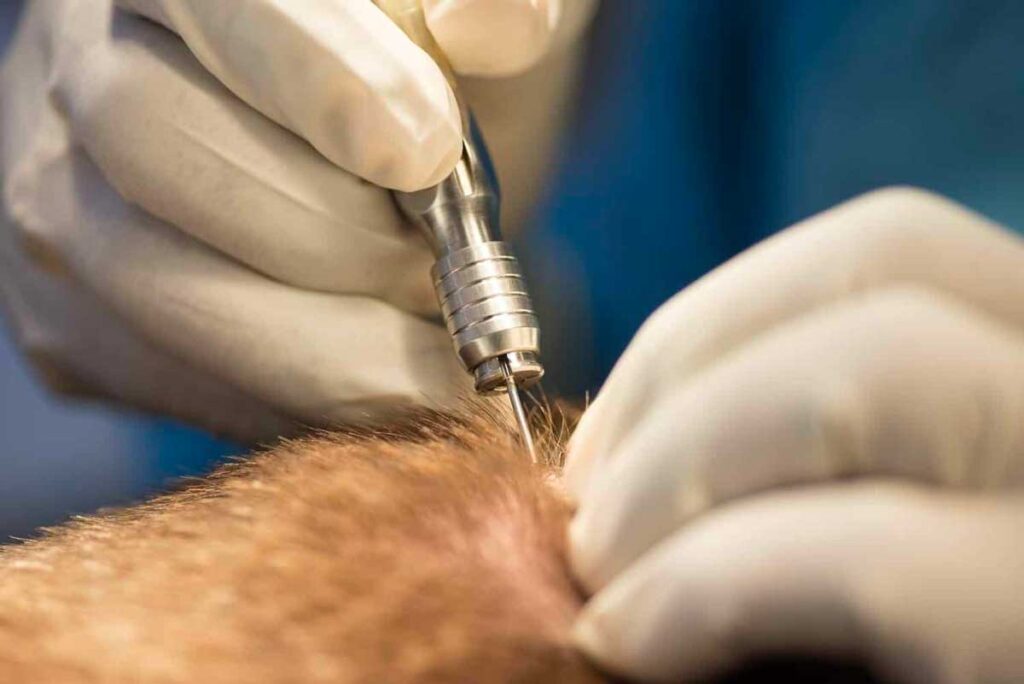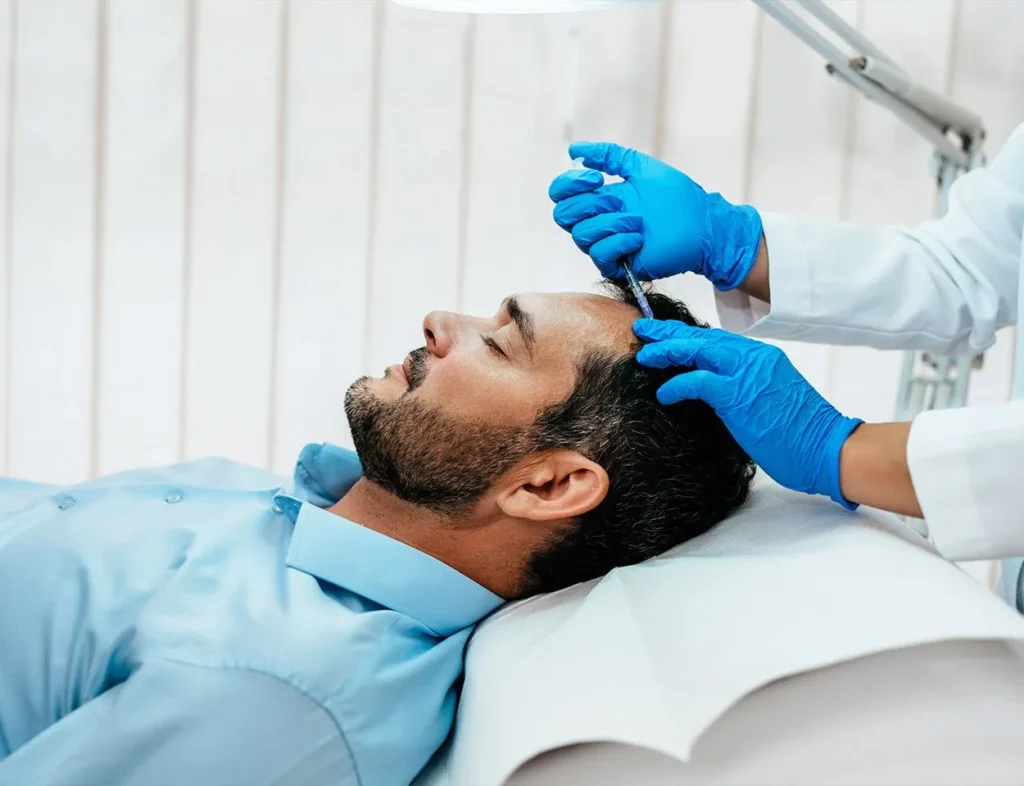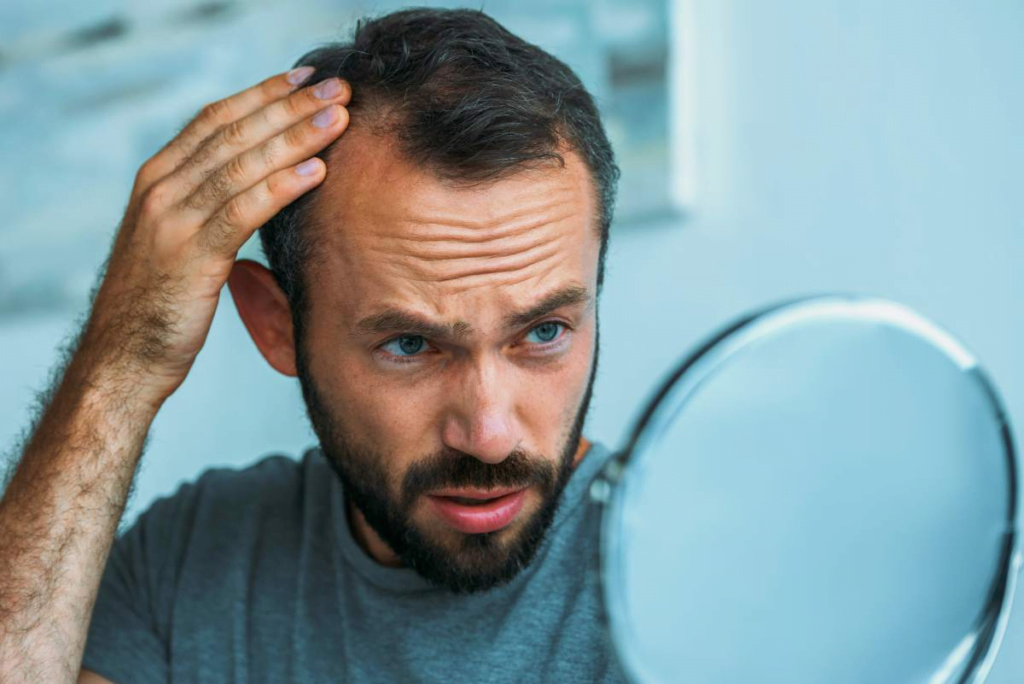
One of the most worrying issues about hair transplantation is the possibility of thinning of the donor area. With this concern, many people have the following questions in mind: “Will the transplanted area be beautiful?”, “Will the hair look natural?”, “Will there be pain?”…
However, there is one question that usually remains in the background but is as confusing as the others: Does hair transplantation thin the donor site? In this article, we will look for the answer to this very question. What is the donor area, how does it work, how many grafts can be harvested and is it damaged during these procedures?
İçindekiler
What is the Donor Area?
The donor area is the area where the hair follicles to be transplanted in hair transplantation are supplied. Generally, the most important feature of this area is the absence of hair loss. The donor area is preferred at the back of the head, between the top of the ear and the nape line. This area has hair follicles that are genetically resistant to hair loss. In other words, hairs that continue to grow throughout life without being affected by genetic baldness are here. This feature makes the donor site an indispensable source for hair transplantation.
Why Is Damage to the Donor Area a Concern?
Many people who are considering hair transplantation worry about thinning of the donor area, which makes it difficult to make a decision. The reason for your concern is that hair follicles are a limited resource. Just like a budget…
If too many grafts are taken from the donor area or if they are taken with the wrong technique, there may be a visible thinning, and in some cases even permanent gaps. A professional expert and team approach is important here. If the donor area becomes thinner:
- The back hair looks weak and lifeless.
- It may cause aesthetic problems especially in men with short hair.
- When a second hair transplant is needed, there may not be enough grafts.
For this reason, sensitivity, proper planning and an experienced team are vital in every process of hair transplantation and especially in the approach to the donor area.
Does Hair Transplantation Really Thin the Donor Area?
Hair transplantation performed in the wrong hands can cause thinning in the donor area. However, there is no thinning in this area in transplantation performed by an experienced specialist and team. Because a team experienced in this field evaluates the donor capacity of the patient in the best way and with great care.
Factors Affecting the Condition of the Donor Area
- Number of Grafts Taken
Generally, 3000-4000 grafts can be taken from a healthy donor site. If this number is exceeded, sparseness occurs in this area. Especially if a second operation is planned, the first transplantation should be more controlled. - Graft Distribution
It is important to collect hair follicles from the donor area in a balanced way. Taking too many grafts from the same area may cause sparseness in that area. But if the hair follicles are harvested homogeneously, at regular intervals and symmetrically, a natural-looking density can be maintained. - FUE and DHI Techniques
The FUE technique, the most commonly used method in modern hair transplantation, does not damage the donor area when applied correctly. In the DHI technique, grafts are taken and transplanted directly with a special pen, which makes the process a little more controlled. However, both techniques should be performed by experienced specialists. - Hair Type and Density
Some people have thicker hair follicles and can receive more dense grafts. In people with thin or sparse hair, the donor site is much more limited. In such cases, too much harvesting may jeopardize the aesthetic results of hair transplantation.
What Should Be Done to Protect the Donor Area?
- Graft Planning: There may be situations where hair transplantation needs to be repeated. Therefore, all grafts should not be loaded in the first session and future possibilities should be considered.
- Symmetrical Graft Collection: The method of harvesting also determines the fate of the donor area. It should be systematic, not haphazard.
- Donor Analysis: Hair density and hair type should be analyzed in detail.
- Correct Information: The patient should be informed by a specialist about realistic results before hair transplantation.
What Should Be Done for the Donor Area in Case of Thinning?
If the area is too thinned, a second hair transplant may be limited. However, in some cases, grafts can be taken from around the donor area or from the beard. Besides all these, the first step is not to risk the grafts and to plan well.
Hair Transplant Planning is Everything to the Health of the Donor Area

Hair transplantation does not only mean planting grafts. It refers to an extremely wide period of time from before to after the transplantation. The health of not only the transplanted hair but also the donor area must be preserved for other transplants. The donor area is the basis for the integrity of the hair transplantation and the results. Carelessly consuming grafts in this area eliminates many future options. But with the right technique and conscious planning, it becomes a healthy source.
Hair is not only an external appearance; it is a part of one’s self-confidence, social presence and the relationship with oneself. Therefore, the question of not only “how do I look?” but also “how do I protect it?” is extremely important.
Hairtrans.com was founded by world-famous plastic surgeon Dr. MFO, who is an expert in facial feminization or facial masculinization surgeries, and is managed under his leadership. Would you like to have a hair transplant under the coordination of a plastic surgeon with many years of experience?
Whether you are a trans woman or a natural born male or female, if you are looking for the best hair transplant, contact us now.


